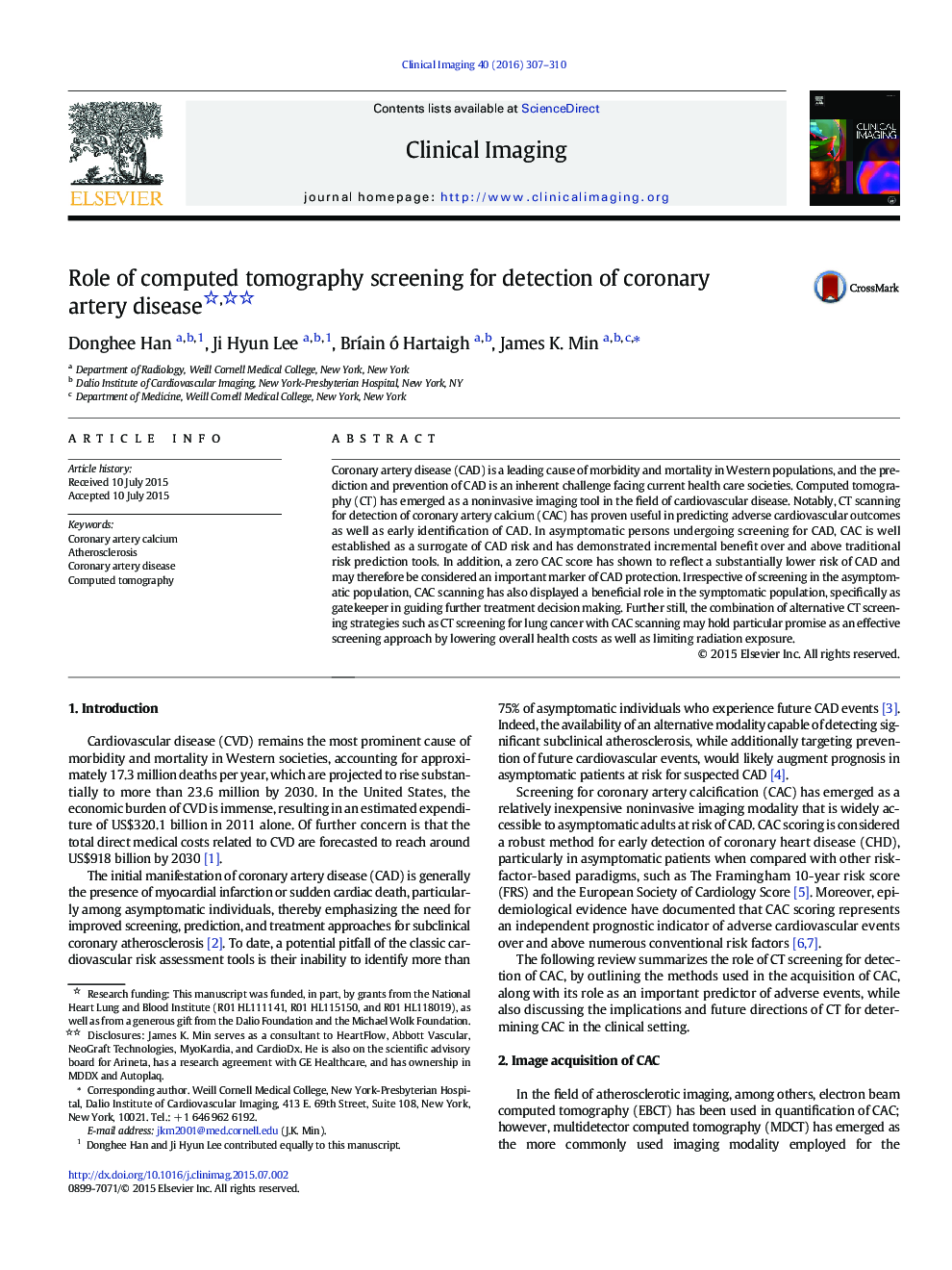| Article ID | Journal | Published Year | Pages | File Type |
|---|---|---|---|---|
| 4221196 | Clinical Imaging | 2016 | 4 Pages |
Coronary artery disease (CAD) is a leading cause of morbidity and mortality in Western populations, and the prediction and prevention of CAD is an inherent challenge facing current health care societies. Computed tomography (CT) has emerged as a noninvasive imaging tool in the field of cardiovascular disease. Notably, CT scanning for detection of coronary artery calcium (CAC) has proven useful in predicting adverse cardiovascular outcomes as well as early identification of CAD. In asymptomatic persons undergoing screening for CAD, CAC is well established as a surrogate of CAD risk and has demonstrated incremental benefit over and above traditional risk prediction tools. In addition, a zero CAC score has shown to reflect a substantially lower risk of CAD and may therefore be considered an important marker of CAD protection. Irrespective of screening in the asymptomatic population, CAC scanning has also displayed a beneficial role in the symptomatic population, specifically as gatekeeper in guiding further treatment decision making. Further still, the combination of alternative CT screening strategies such as CT screening for lung cancer with CAC scanning may hold particular promise as an effective screening approach by lowering overall health costs as well as limiting radiation exposure.
